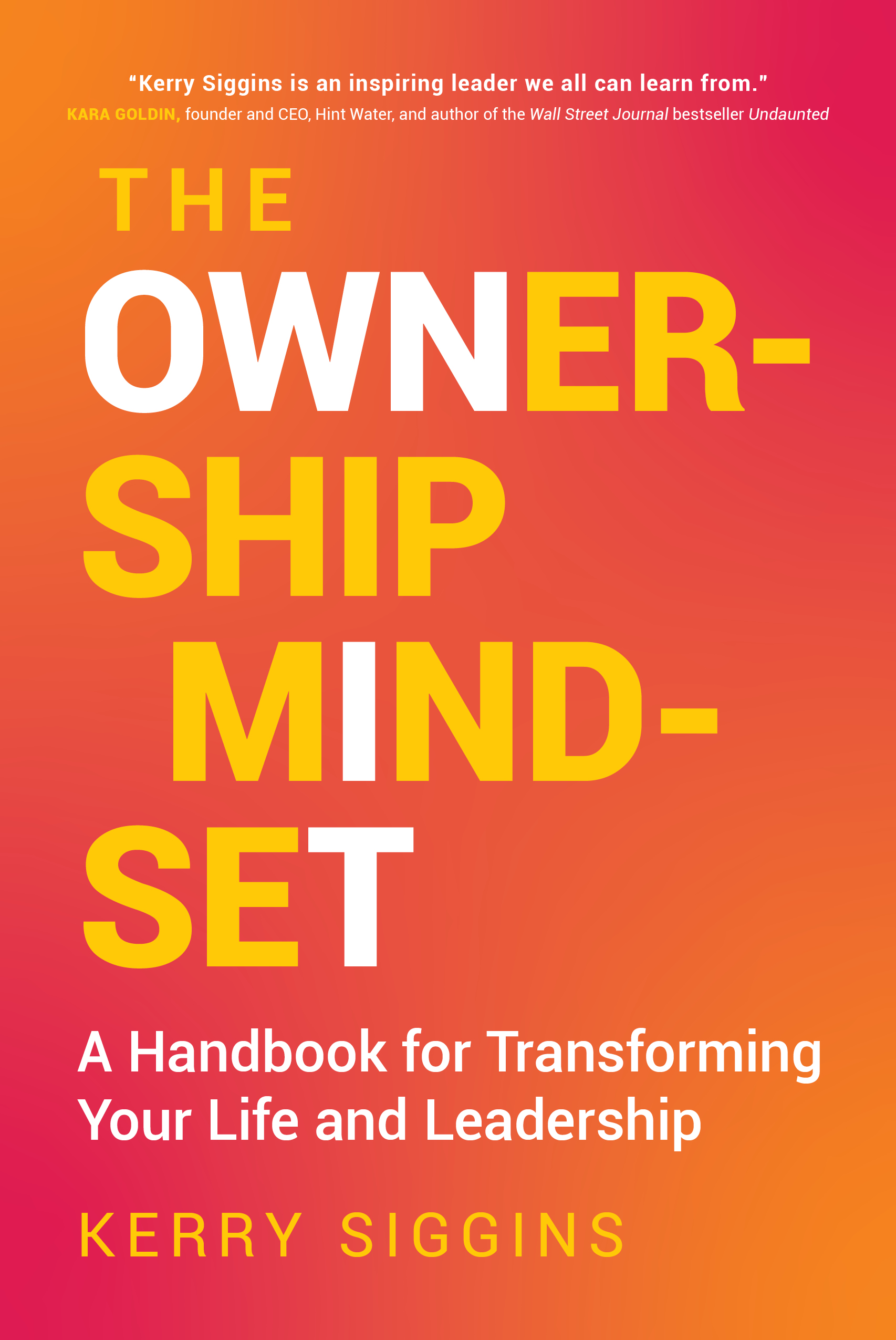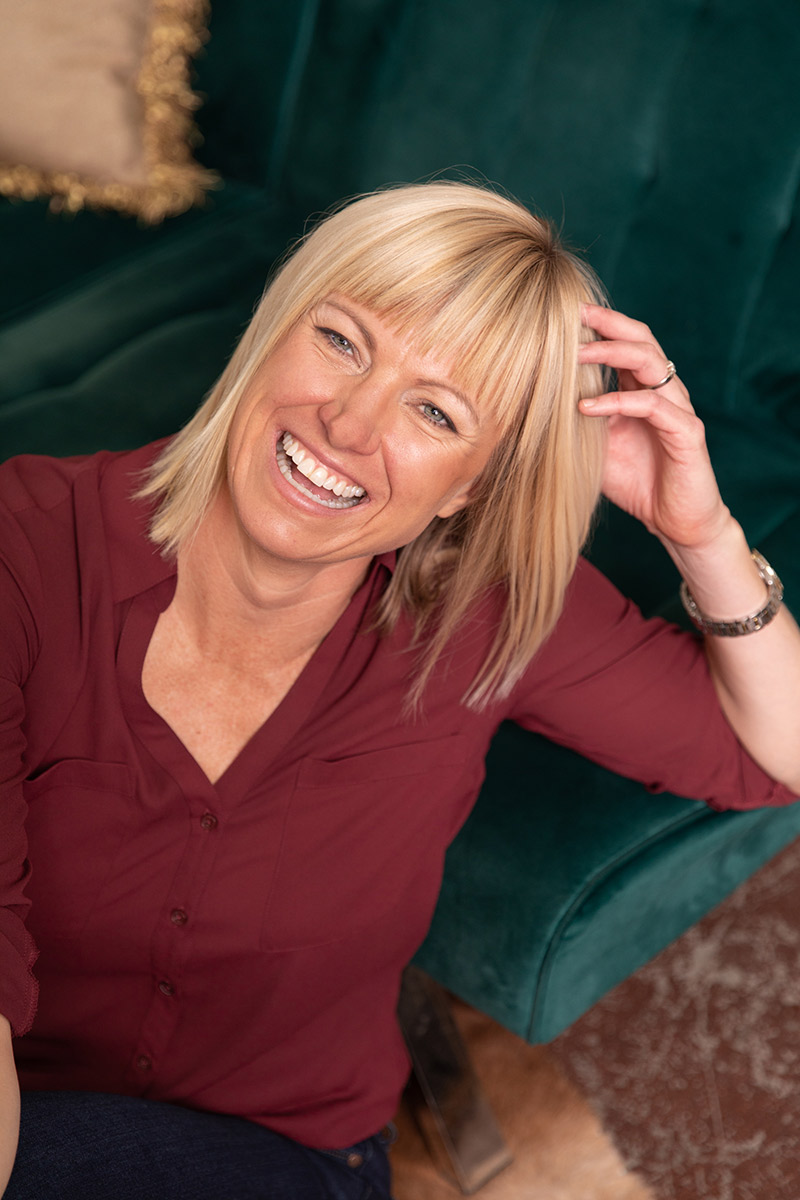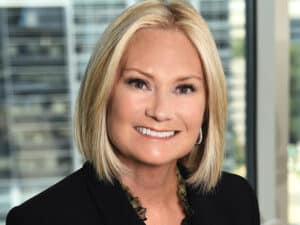As the CEO of StoneAge, a top-tier manufacturer of industrial cleaning equipment, Kerry Siggins has propelled the company to new heights, earning it a spot on Inc. Magazine’s Best Place to Work list in 2023.
Her entrepreneurial spirit, focus on purpose-driven growth, and impactful leadership have led to her recognition as EY’s Entrepreneur Of The Year in 2023. Beyond her work at StoneAge, Siggins sits on the boards of several companies, contributes to renowned publications such as Forbes and Entrepreneur, and is part of the esteemed Young Presidents’ Organization (YPO). Siggins is also known for her enlightening keynote speeches on creating safe, employee-centric work environments and is the host of the popular podcast Reflect Forward.
I had the chance to connect with Siggins to discuss her leadership philosophy, her strategies for building a successful business, and the lessons she’s learned along the way – all of which she covers in her newly released book, The Ownership Mindset: A Handbook for Transforming Your Life and Leadership, which promises to be an invaluable resource for aspiring leaders and seasoned executives alike.
Check out my full interview with Kerry Siggins below.
Can you share with us your journey from overcoming substance abuse to becoming the CEO of StoneAge and what lessons you learned along the way?
Kerry Siggins: After graduating from Colorado School of Mines in 2001, I was lost. From a career perspective, I knew I didn’t want to be an engineer, but I didn’t know who I was or what kind of job I wanted. Feeling unworthy and like I was a failure, I used drugs and alcohol to cope and quickly developed substance abuse issues.
I decided a fresh start would help, so I moved to Austin, TX, working for Eaton Corporation. Eaton helped me find my love for people management and the complex world of manufacturing and engineering operations.
Still, my drug issues, ever-present, diminished my effectiveness and almost took me down. In 2006, after accidentally overdosing, I decided enough was enough. I knew I had potential and could live a more fulfilling, successful life, so I went home to live with my mom in Durango, Colorado, to start over once again.
When I got to Durango, I did what you do in a small town: apply for jobs posted in the local newspaper. StoneAge was looking for a General Manager, and even though I was grossly underqualified, I applied. The co-founders saw something in me – potential, drive, smarts, and a positive attitude – so they took a risk and hired me. I had just turned 28. Being home with my mom and working for StoneAge saved my life. I was able to put my substance abuse issues behind me because I found purpose and meaning in my work and life.

What inspired your new book, The Ownership Mindset: A Handbook for Transforming Your Life and Leadership?
Kerry Siggins: Helping others become their better self and people leaders was the inspiration behind my book. I’ve learned so much about the power of self-leadership, vulnerability, transparency, and caring leadership that I wanted to share what I’ve learned with others. I hope to inspire leaders to build an Own It Culture within their own organizations.
You talk about the “Ownership Mindset” in your book. Can you elaborate on what that means and how it can transform a business?
Kerry Siggins: The Ownership Mindset is the action of owning your actions, attitude, work effort, and the quality of your relationships. It’s holding the belief that you are responsible for everything that happens in your life. It’s the rejection of blame and excuse-making.
When leaders adopt and implement The Ownership Mindset, they build a culture of trust, teamwork, shared experiences, and transparency, inspiring deep employee engagement. Deep engagement boosts increased productivity, happiness, commitment, and fun, which leads people to go the extra mile – to show up for more than just a paycheck.
In my experience, this kind of engagement translates to improved customer experience and loyalty, better relationships with suppliers, and the ability to attract and retain top talent.
In your experience, what are the key steps for successfully implementing an Employee Stock Option Plan (ESOP) to encourage employees to value the business as their own?
Kerry Siggins: This is a big question because ESOP transactions and implementations are so complicated, but there are a few things leaders can do to prepare the culture for the transition.
First, consider creating a profit-sharing plan before becoming an ESOP. Doing so helps people think about their impact on the bottom line.
Second, communicate, communicate, communicate. ESOPs are confusing, and people will naturally wonder, “What does this mean for me?” Have a robust and ongoing communication plan in place.
Third, create an employee-led internal ESOP communications committee that celebrates the ESOP and helps advocate for and educate on the value of the ESOP.
And, finally, clearly define what thinking and acting like an owner looks like within your organization so that people understand expectations and what success looks like.
Can you share some practical advice for leaders looking to empower their employees with an “ownership mindset”?
Kerry Siggins: The best piece of advice I can give a leader who wants to cultivate ownership thinking is to build trust and give autonomy to their employees – the foundation of The Ownership Mindset. People want to know they are trusted by their leaders, even if they make a mistake. They also want control over their work. You can’t help them develop an “I own it” mentality unless you are willing to let them actually own it.

What strategies would you recommend for individuals looking to transition their attitude towards work from just a paycheck to a purpose?
Kerry Siggins: Read and implement the advice in my book – this is why I wrote it! All kidding aside, I would first recommend having a clear vision of what you want your culture to look like.
Survey your employees to get a baseline assessment so you know how they feel. Then, develop a leadership development program that teaches managers how to build trust, create psychological safety, and delegate authority.
This isn’t easy, and it takes time and thoughtful intention and action. Pick one area to focus on so you don’t get overwhelmed.
You emphasize the power of asking questions in achieving success. Can you share an example of a powerful question that has made a difference in your career?
Kerry Siggins: My favorite question is, “What do you think?”
This powerful question shows that you are interested in peoples’ ideas, suggestions, and opinions. It opens the door for problem-solving. And it teaches people to trust themselves – that they have the ability to think through and solve tough challenges.
How do you handle feedback, especially when it’s challenging, and what advice would you give to others for taking feedback like a champ?
Kerry Siggins: Receiving feedback can be difficult, but you must get it to improve. When I get feedback that stings, I take a deep breath and say, “Thanks for the feedback. I appreciate you telling me, and I know it’s not easy.”
This defuses a potentially tough situation and gives me time to pause so I don’t react. There is a gift in every piece of feedback if you choose to hear people out, take action, and learn from it.
My advice for taking feedback like a champ: Say thank you, ask questions so you understand exactly where it’s coming from, appreciate action to fix what needs to be fixed, and express gratitude for it, even if it hurts. This is where the growth happens.
How do you create a safe and inclusive culture where employees feel comfortable speaking up and showing up as their whole selves?
Kerry Siggins: The most important thing we do is show people we care about them. And not just about them as employees but also about their families, well-being, personal development, ideas, opinions, and dreams. When people know their company cares about them, they feel safer and more at ease.
As a regular contributor to Forbes, Entrepreneur, Authority magazine, and BIC magazine, what message do you aim to convey through your writings and podcasts?
Kerry Siggins: That leadership is a continuous journey, and it’s worth investing in developing your leadership skills. I hope to give readers actionable tips that they can immediately put into practice and achieve results.
And finally, what’s next for you after the release of “The Ownership Mindset”?
Kerry Siggins: I am enjoying the process and am speaking extensively about the principles laid out in the book. Book number two is in the works, and I plan to start it in the summer of 2024.
Published in Books, Business, Career, Featured Articles, Featured WomenEmily Sprinkle, also known as Emma Loggins, is a designer, marketer, blogger, and speaker. She is the Editor-In-Chief for Women's Business Daily where she pulls from her experience as the CEO and Director of Strategy for Excite Creative Studios, where she specializes in web development, UI/UX design, social media marketing, and overall strategy for her clients.
Emily has also written for CNN, Autotrader, The Guardian, and is also the Editor-In-Chief for the geek lifestyle site FanBolt.com






